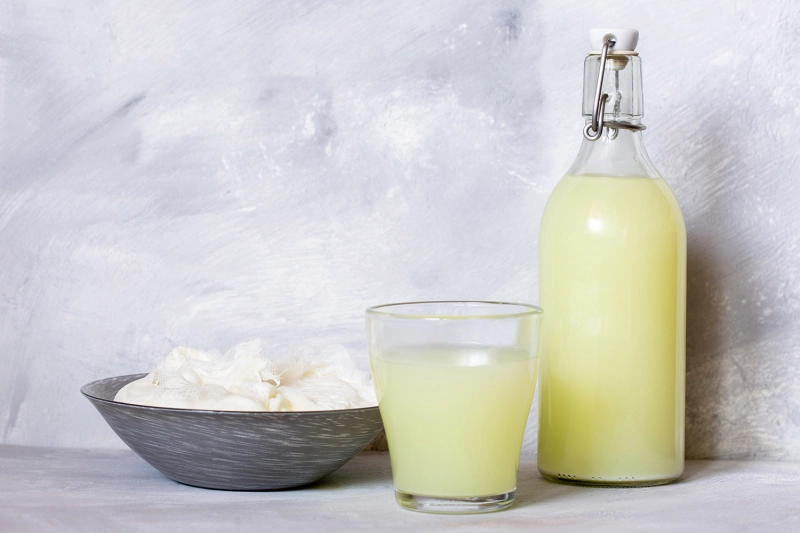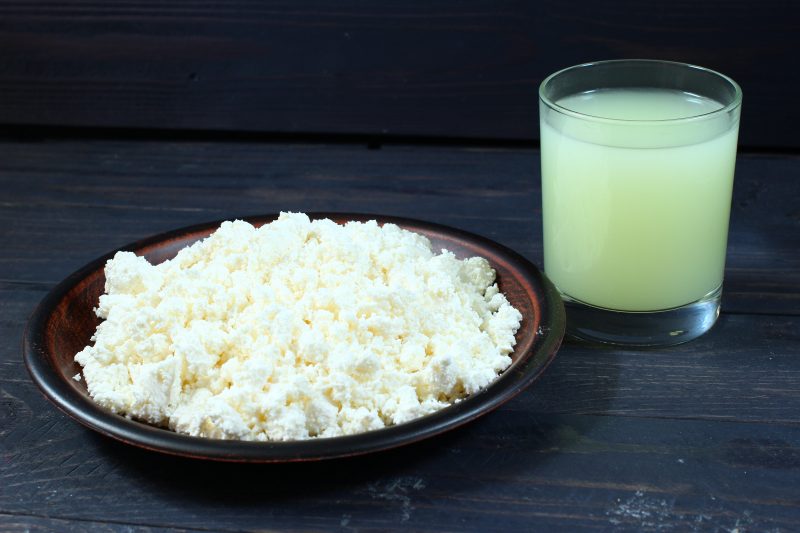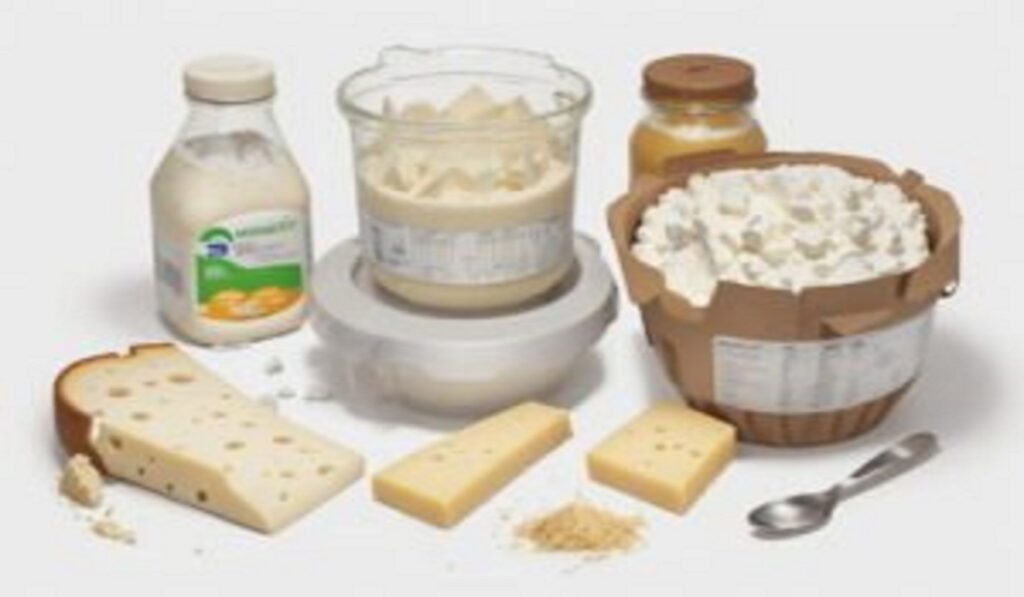Table of Contents

What is whey?
Whey is the cloudy yellowish liquid that remains after curd or cheese has been produced. It is full of proteins, vitamins, minerals, and enzymes.
There are two types of whey you will encounter in your home dairy adventures:
1. Acid milk whey – The whey from cheese in which an acid (such as vinegar or lemon juice) has been added to aid in the clotting process. (Some types of mozzarella, lemon, or farmer’s cheese).
2. Sweet Milk Whey – Whey from cultured or curdled cheese with rennet instead of additional acid. (Like soft cheese and traditional mozzarella).
If you want to get technical, sweet whey has a pH greater than or equal to 5.6; Whey has a pH less than or equal to 5.1.
Where does whey come from?
If you’ve been making cheese for any length of time, you probably already know that whey is basically the water you’re trying to remove from the curds in order to make cheese.
Let’s first talk about the milk used to make cheese and its ingredients:
*Protein (casein) is one of the components that must be focused on the main body of cheese.
This will initially form the curd you need to begin with, but there are protein components that leach out of the whey (whey proteins = ricotta).
Calcium is the glue that holds proteins together. Some of this stays in your cheese and some of it pours into the whey. It all depends on the process and the cheese you’re making.
*Lactose is the milk sugar that bacteria must convert into lactic acid. This is how you prevent cheese from becoming compost. Some of this will always run into whey. This is the food that bacteria live on.
The fat is the tasty part that gives your cheese the full flavor and silky texture you love so much. You want to keep as much in the cheese as possible but no matter how hard you try, some will run out of whey.
Water:
* Bacteria are involved in consuming lactose and converting it into lactic acid. These can either come naturally in raw milk (a very diverse variety) or those added to pasteurized milk (a more selective variety). Most are trapped inside the curd, but enough escape as the whey drains to continue fermenting the whey if kept warm.
*Minerals and enzymes are also present in the milk which will support the bacteria, as well as participate in the protein and fat transformations that make cheese as ripe as it should be.
It follows logically that whey also contains some good stuff and probably shouldn’t be flushed down the drain!

6 ways to use whey
*Use it in bread, cakes, biscuits, muffins, and pies.
You can substitute water for whey in any good baked recipe to make crumbs that are softer and more tender, but keep in mind—especially with yeast bread—that it will make the crust brown more quickly and more deeply. For some, this is desirable for others – and also this method can provide bread and pastries with high nutritional value because whey contains proteins and minerals beneficial to the human body.
* Use juices.
Bodybuilders pay huge bucks to consume whey protein powder while bulking up, but with the pure liquid form available to you, add 1/2 cup to your next smoothie for extra sweetness and protein.
for more information about the juices industry click here
*Use it to ferment vegetables.
Eating fermented foods is an essential part of maintaining a healthy colon and thus allowing your body to absorb the nutrients it needs. Use only a few tablespoons of whey when preparing your next batch of sauerkraut, kimchi, or ginger, or stir it in with homemade mayonnaise to extend its useful life.
I should mention that whey derived from cheesemaking is not the best for fermenting lactose, just because it separates from the milk solids quickly due to coagulation and a slight heat. Whey derived from cultured dairy products such as yogurt or kefir carries all the benefits of farm-raised plus it has time to naturally separate from milk solids, allowing time for the good bacteria to multiply. The latter is definitely the preferred method in this case.
Use it to soak beans and grains.
An acidic medium is needed to break down the phytates in grains and flour and make them more digestible in our bodies. Whey is an excellent option for this.
*drink it.
It was said that Hippocrates recommended drinking whey to many of his patients, especially for its beneficial and healing properties. It’s full of beneficial bacteria for healing the gut, it’s full of protein, and it no longer contains lactose, as it has been separated from milk solids, making it easy to digest. If the thought of drinking it straight makes you feel a little nauseous (as it does for me),
*Use it as a brine for cottage cheese.
Store mozzarella or feta cheese in a whey brine to keep the cheese fresh for longer.

What is whey protein?
Whey protein is part of whey, a liquid that separates from milk during cheese production. It is a complete, high-quality protein that contains all the essential amino acids. It is also very easy to digest, as it is absorbed from the intestine quickly compared to other types of protein (source). These unique qualities make it one of the best dietary sources of protein available.
There are three main types of whey protein powder: concentrate (WPC), isolate (WPI), and hydrolyzed (WPH). Whey protein concentrate is the most popular type and also the least expensive. As a dietary supplement, whey protein is very popular among athletes, bodybuilders, and others who want extra protein in their diet.

The most important whey proteins:
1- Beta-lactoglobulin
2- Alpha-lactalbumin
3- Glycomacropeptide
4- Immunoglobulin
5- Bovine Serum Albumin (BSA)
6- Lactoferrin
7- lactoperoxidase
8- lysozyme
An enzyme that accelerates the breakdown of the cell wall of some bacteria

The stages of making yogurt are here
NanoPro Foods Industry Consultancy is one of the best companies that enables you to get great results for you. Contact us today for more details

